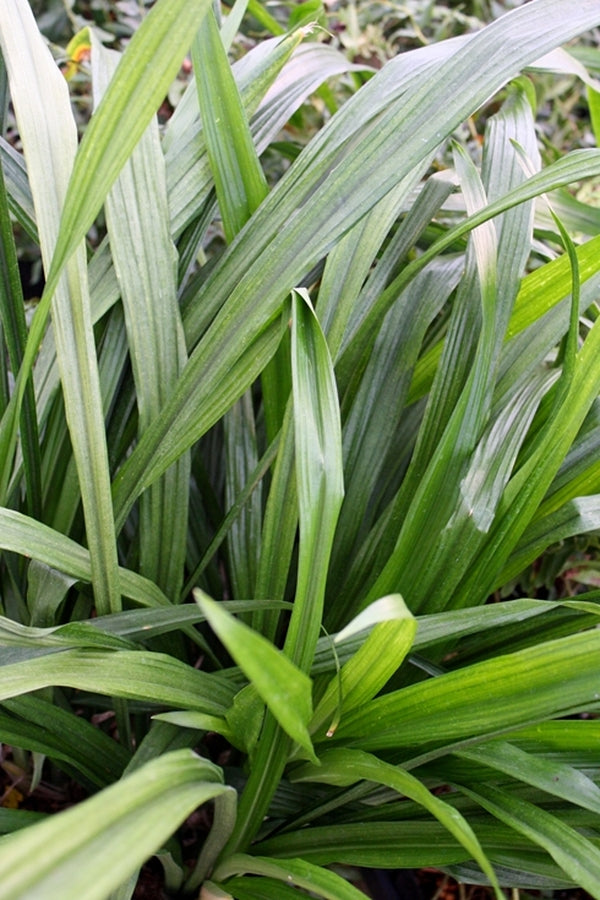Aspidistra carnosa 'Rigid Ribbons'
Rigid Ribbons Cast Iron Plant
This plant is not currently for sale. This is an archive page preserved for informational use.
Shop Available AspidistraItem #: 2181
Zones: 9a to 11
Dormancy: Evergreen
Height: 24" tall
Origin: North Vietnam
Pot Size: 3.5" pot (24 fl. oz/0.7 L)
Aspidistra carnosa is one of the more unusual cast iron plants, looking more like a giant liriope. Our offering of Aspidistra carnosa 'Rigid Ribbons' is a North Vietnamese collection brought to the US by plantsman Barry Yinger. The 2' tall x 1" wide, deeply pleated, arching, green leaves form an evergreen clump, adorned at ground level in early February with heavily corrugated, quarter-sized burgundy flowers, each resembling everyone's favorite plant, Audrey Two. Aspidistra carnosa 'Rigid Ribbons' makes a great houseplant where it isn't winter hardy.
Maintenance:
Aspidistra are very low maintenance perennials. Each leaf can last up to 3 years, but after the second year, it will begin to show signs of aging and leaf degradation. For that reason, we recommend removing all old foliage regularly to retain the attractiveness of the clump. It's always disappointing to see large patches of cast iron plants in public spaces where it hasn't been properly maintained.
Growing Conditions:
Apidistra grow well in both moist and dry soils as long as the drainage is good. They must be grown in shade, since their foliage will scorch if they are subjected to sun. In the jungles where they grow, they are often seen in very deep shade.
In containers, they make superb house plants. The common name cast iron plant speaks to their durability in less than ideal conditions. Regular moisture, including increased humidity when they are grown as house plants, keeps them from getting stressed and becoming susceptible to spider mites.
Garden Value:
The narrow, ribbon-like texture and upright form of cast iron plants is invaluable in the garden, since there few other plants with this form and texture. Many have amazing flowers, produced at the base of the foliage, often in the winter months. While these flowers are rarely noticed in the garden, they can be quite attractive in the home.


-
Other Attributes
Genus: Aspidistra
Flower Color: Red
Leaf Color: Green
Bloom Time: Winter
Other: Drought Tolerant Plants , Dry Shade Plants , Tropical Looking Plants , Plants Retiring This Year


